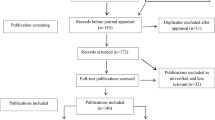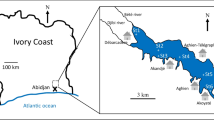Abstract
Occurrence of toxic cyanobacteria and cyanotoxins in drinking, recreational, and irrigation waters represents a health hazard to wildlife and humans. This review describes the most common cyanotoxins and their producing taxa and the potential environmental health risks in marine and freshwaters of Saudi Arabia. The most common genera of toxigenic cyanobacteria detected in Saudi waters included Anabaena/Dolichospermum, Anabaenopsis, Cylindrospermopsis, Lyngbya, Microcystis, and Oscillatoria. The cyanotoxins produced by these taxa and have been detected in Saudi Arabia are microcystins (MCYSTs), cylindrospermopsin (CYN), saxitoxins, and lyngbyatoxin-like toxins. Anatoxin has not been investigated in Saudi Arabia, and extensive research is running for this toxin. Studies have detected microcystins in treated drinking waters, groundwater wells, and hot springs and their accumulation in vegetables and fish. Toxin amounts in these commodities often exceeded the WHO guidance values for safe exposure. This indicates that a human health risk could be occurring upon exposure to such potent toxins. Beyond a comprehensive analysis of cyanotoxins in marine and freshwater environments, this paper also identifies and prioritizes research gaps and suggests future research on cyanotoxins in Saudi Arabia.


Similar content being viewed by others
References
Addico GND, Hardege JD, Kohoutek J, Babica P (2017) Cyanobacteria and microcystin contamination in untreated and treated drinking water in Ghana. Adv Oceanogr Limnol 8:92–106
Al-Kahtani MA, Fathi AA (2008) Physiological studies on tilapia fish (Oreochromis niloticus ) as influenced by the cyanobacterial toxins microcystin. J Biol Sci 8:1226–1230
Almazroui M, Islam NM, Athar H, Jones PD, Rahman MA (2012) Recent climate change in the Arabian peninsula: annual rainfall and temperature analysis of Saudi Arabia for 1978-2009. Int J Climatol 32:953–966
Al-Shehri AM (2010) Toxin-producing blooms of the cyanobacterium Microcystis aeruginosa in rainwater ponds in Saudi Arabia. Oceanol Hydrobiol Stud 39:171–187
Al-Shehri AM, Mohamed ZA (2007) Mass occurrence and toxicity of the cyanobacterium Lyngbya majuscule under phosphorus-limited conditions in the Red Sea. Ecohydrol Hydrobiol 7:51–57
Azevedo SM, Carmichael WW, Jochimsen EM, Rinehart KL, Lau S, Shaw GR, Eaglesham GK (2002) Human intoxication by microcystins during renal dialysis treatment in Caruaru-Brazil. Toxicology 181–182:441–446
Buratti FM, Manganelli M, Vichi S, Stefanelli M, Scardala S, Testai E, Funari E (2017) Cyanotoxins: producing organisms, occurrence, toxicity, mechanism of action and human health toxicological risk evaluation. Arch Toxicol 9:1049–1130
Carmichael WW, Li R (2006) Cyanobacteria toxins in the Salton Sea. Saline Syst 2:5
Chen T, Wang Q, Cui J, Yang W, Shi Q, Hua Z, Ji J, Shen P (2005) Induction of apoptosis in mouse liver by microcystin-LR a combined transcriptomic, proteomic, and simulation strategy. Mol Cell Proteomics 4:958–974
Chorus I (2012) Current approaches to cyanotoxin risk assessment, risk management and regulations in different countries. Umweltbundesamt, Berlin
Chorus I, Bartram J (1999) Toxic cyanobacteria in water: a guide for their public health consequences, monitoring and management. Published on behalf of WHO by E&FN Spon, London
Codd G, Bell S, Kaya K, Ward C, Beattie K, Metcalf J (1999) Cyanobacterial toxins, exposure routes and human health. Eur J Phycol 34:405–415
Codd GA, Morrison LF, Metcalf JS (2005) Cyanobacterial toxins: risk management for health protection. Toxicol Appl Pharmacol 203:264–272
Du X, , Liu H , Yuan L , Wang Y , Ma Y , Wang R , Chen X , Losiewicz MD , Guo H, Zhang H (2019) The diversity of Cyanobacterial toxins on structural characterization, distribution and identification: a systematic review. Toxins 11: 530
Duan L, Wang X, Zhang Y, Liu HY, Huang Z (2008) Investigation of endotoxin contamination in drinking water in Wuhan city. J Environ Health 25:856–858
Dubovik IE (2002) Migration of aerophytic algae and their colonization on different substrata. Inter J Algae 4:48–55
El Gammal MA, Nageeb M, Al-Sabeb S (2017) Phytoplankton abundance in relation to the quality of the coastal water – Arabian Gulf, Saudi Arabia. Egypt J Aquat Res 43:275–282
Eynard F, Mez K, Walther JL (2000) Risk of cyanobacterial toxins in Riga waters (Latvia). Water Res 34:2979–2988
Funari E, Testai E (2008) Human health risk assessment related to cyanotoxins exposure. CritRev Toxicol 38:97–125
Furtado ALFF, Calijuri MD, Lorenzi AS, Honda RY, Genuario DB, Fiore MF (2009) Morphological and molecular characterization of cyanobacteria from a Brazilian facultative wastewater stabilization pond and evaluation of microcystin production. Hydrobiol 627:195–209
Genitsaris S, Kormas KA, Moustaka-Gouni M (2011) Airborne algae and cyanobacteria: occurrence and related health effects. Front Biosci 3:772–787
Genuário DB, Lorenzi AS, Agujaro LF, Isaac RL, Azevedo MTP, Neto RC, Fiore MF (2016) Cyanobacterial community and microcystin production in a recreational reservoir with constant Microcystis blooms. Hydrobiol 779:105–125
Grumbine RE, Dore J, XuJ (2012) Mekong hydropower: drivers of change and governance challenges. Front Ecol Environ 10:91–98
Hoeger SJ, Shaw G, Hitzfeld BC, Dietrich DR (2005) Occurrence and elimination of cyanobacterial toxins in drinking water treatment plants. Toxicol Appl Pharmacol 203:231–242
Kinnear S (2010) Cylindrospermops in: a decade of progress on bioaccumulation research. Mar. Drugs 8: 542–564
Krienitz L, Ballot A, Kotut K, Wiegand C, Pütz S, Metcalf JS, Codd GA, Pflugmacher S (2003) Contribution of hot spring cyanobacteria to the mysterious deaths of lesser flamingos at Lake Bogoria, Kenya. FEMS Microbiol Ecol 43:141–148
Manubolu M, Lee J, Riedl KM, Kua ZX, Collart LP, Ludsin SA (2018) Optimization of extraction methods for quantification of microcystin-LR and microcystin-RR in fish, vegetable, and soil matrices using UPLC-MS/MS. Harmful Algae 76:47–57
Martins R, Pereira P, Welker M, Fastner J, Vasconcelos VM (2005) Toxicity of culturable cyanobacteria strains isolated from the Portuguese coast. Toxicon 46:454–464
Merel S, Walker D, Chicana R, Snyder S, Baurès E, Thomas O (2013) State of knowledge and concerns on cyanobacterial blooms and cyanotoxins. Environ Int 59:303–327
Metcalf JS, Richer R, Cox PA, Codd GA (2012) Cyanotoxins in desert environments may present a risk to human health. Sci Total Environ 421:118–123
Miller A, Russell C (2017) Food crops irrigated with cyanobacteria-contaminated water: an emerging public health issue in Canada. Environ Health Rev 65:58–63
Mohamed ZA, Ahmed Z, Bakr A, Hashem M, Alamri S (2019) Detection of free and bound microcystins in tilapia fish from Egyptian fishpond farms and its related public health risk assessment. J Consum Protect Food Saf 15:37–47. https://doi.org/10.1007/s00003-019-01254-0
Mohamed ZA (2008) Toxic cyanobacteria and cyanotoxins in public hot springs in Saudi Arabia. Toxicon 51:17–27
Mohamed ZA (2018) Potentially harmful microalgae and algal blooms in the Red Sea: current knowledge and research needs. Mar Environ Rees 140:234–242
Mohamed ZA, Al-Shehri AM (2010) Microcystin production in epiphytic cyanobacteria on submerged macrophytes. Toxicon 55:1346–1352
Mohamed ZA, Al-Shehri AM (2009b) Microcystins in groundwater wells and their accumulation in vegetable plants irrigated with contaminated waters in Saudi Arabia. J Hazard Mater 172:310–315
Mohamed ZA, Al-Shehri AM (2015) Biodiversity and toxin production of cyanobacteria in mangrove swamps in the Red Sea off the southern coast of Saudi Arabia. Bot Mar 58:23–34
Mohamed ZA, Al Shehri AM (2007) Cyanobacteria and their toxins in treated-water storage reservoirs in Abha city, Saudi Arabia. Toxicon 50:75–84
Mohamed ZA, Deyab MA, Abou-Dobara MI, Wesam M, El-Raghi WM (2016) Occurrence of toxic cyanobacteria and microcystin toxin in domestic water storage reservoirs, Egypt. J Water Supp Res Technol-Aqua 65:431–440
Mohamed ZA, Al-Shehri AM (2009a) Microcystin-producing bloom of Anabaenopsis arnoldi in a potable mountain lake in Saudi Arabia. FEMS Microbiol Ecol 69:98–105
Mohamed ZA, Al-Shehri AM (2013) Assessment of cylindrospermops in toxin in an arid Saudi lake containing dense cyanobacterial bloom. Environ Monit Assess 185:2157–2166
Mowe MAD, Mitrovic SM, Lim RP, Furey A, Yeo DCJ (2015) Tropical cyanobacterial blooms: a review of prevalence, problem taxa, toxins and influencing environmental factors. J Limnol 74:205–224
Mur LR, Skulberg OM, Utkilen H (1999) Cyanobacteria in the environment. In: Chorus I, Bartram J (eds) Toxic cyanobacteria in water: a guide to their public health, consequences, monitoring and management. St. Edmundsbury Press, Suffolk, pp 15–40
O'Toole J, Sinclair M, Jeavons T, Leder K (2008) Alternative water sources and endotoxin. Water Sci Technol 58:603–607
Paerl HW, Timothy G, Otten TG, Kudela R (2018) Mitigating the expansion of harmful algal blooms across the freshwater-to-marine montinuum. Environ Sci Technol 52:5519–5529
Pringault O, Garcia-Pichel F (2004) Hydrotaxis of cyanobacteria in desert crusts. Microb Ecol 47:366–373
Silva CSP, Genuario DB, Vaz MGMV, Fiore MF (2014) Phylogeny of culturable cyanobacteria from Brazilian mangroves. Syst Appl Microbiol 37:100–112
Sivonen K, Jones G (1999) Cyanobacterial toxins. In: Chorus I, Bartram J (eds) Toxic cyanobacteria in water. A guide to their public health consequences. Monitoring and management. WHO E &FNSpon, London, pp 41–112
Stewart I, Carmichael WW, Sadler R, McGregor GB, Reardon K, Eaglesham GK (2009) Occupational and environmental hazard assessments for the isolation, purification and toxicity testing of cyanobacterial toxins. Environ Health 8:1–12
Svirčev Z, Drobac D, Tokodi N, Mijović B, Codd GA, Meriluoto J (2017) Toxicology of microcystins with reference to cases of human intoxications and epidemiological investigations of exposures to cyanobacteria and cyanotoxins. Arch Toxicol 9:621–650
Svirčev Z, Lalić D, BojadžijaSavić G, Tokodi N, DrobacBacković D, Chen L, Meriluoto J, Codd GA (2019) Global geographical and historical overview of cyanotoxin distribution and cyanobacterial poisonings. Arch Toxicol 93:2429–2481
Taylor MS, Stahl-Timmins W, Redshaw CH, Osborne NJ (2014) Toxic alkaloids in Lyngbya majuscule and related tropical marine cyanobacteria. Harmful Algae 31:1–8
Tian D, Zheng W, Wei X, Sun X, Liu L, Chen X, Zhang H, Zhou Y, Chen H, Zhang H, Wang X, Zhang R, Jiang S, Zheng Y, Yang G, Qu W (2013) Dissolved microcystins in surface and ground waters in regions with high cancer incidence in the Huai River basin of China. Chemosphere 91:1064–1071
Villeneuve A, Laurent D, Chinain M, Gugger M, Humbert JF (2012) Molecular characterization of the diversity and potential toxicity of cyanobacterial mats in two tropical lagoons in the South Pacific Ocean. J Phycol 48:275–284
Warren-Rhodes KA, Rhodes KL, Pointing SB, Ewing SA, Lacap DC, Gómez Silva B, Amundson R, Friedmann EI, McKay CP (2006) Hypolithic cyanobacteria, dry limit of photosynthesis, and microbial ecology in the hyper arid Atacama Desert. Microb Ecol 52:389–398
Yang Z, Kong F, Zhang M (2016) Groundwater contamination by microcystin from toxic cyanobacteria blooms in Lake Chaohu, China. Environ Monit Assess 188:280
Zegura B (2016) An overview of the mechanisms of microcystin-LR genotoxicity and potential carcinogenicity. Mini-Rev Med Chem 16:1042–1062
Funding
The authors appreciate and acknowledge the Deanship of Scientific Research at King Khalid University for funding this study through the Research Groups Program under Grant No. R.G.P. 2-14-40.
Author information
Authors and Affiliations
Corresponding author
Additional information
Responsible Editor: Haroun Chenchouni
Rights and permissions
About this article
Cite this article
Mohamed, Z.A., Hashem, M., Alamri, S. et al. Cyanotoxins and their environmental health risk in marine and freshwaters of Saudi Arabia. Arab J Geosci 13, 285 (2020). https://doi.org/10.1007/s12517-020-5238-7
Received:
Accepted:
Published:
DOI: https://doi.org/10.1007/s12517-020-5238-7




